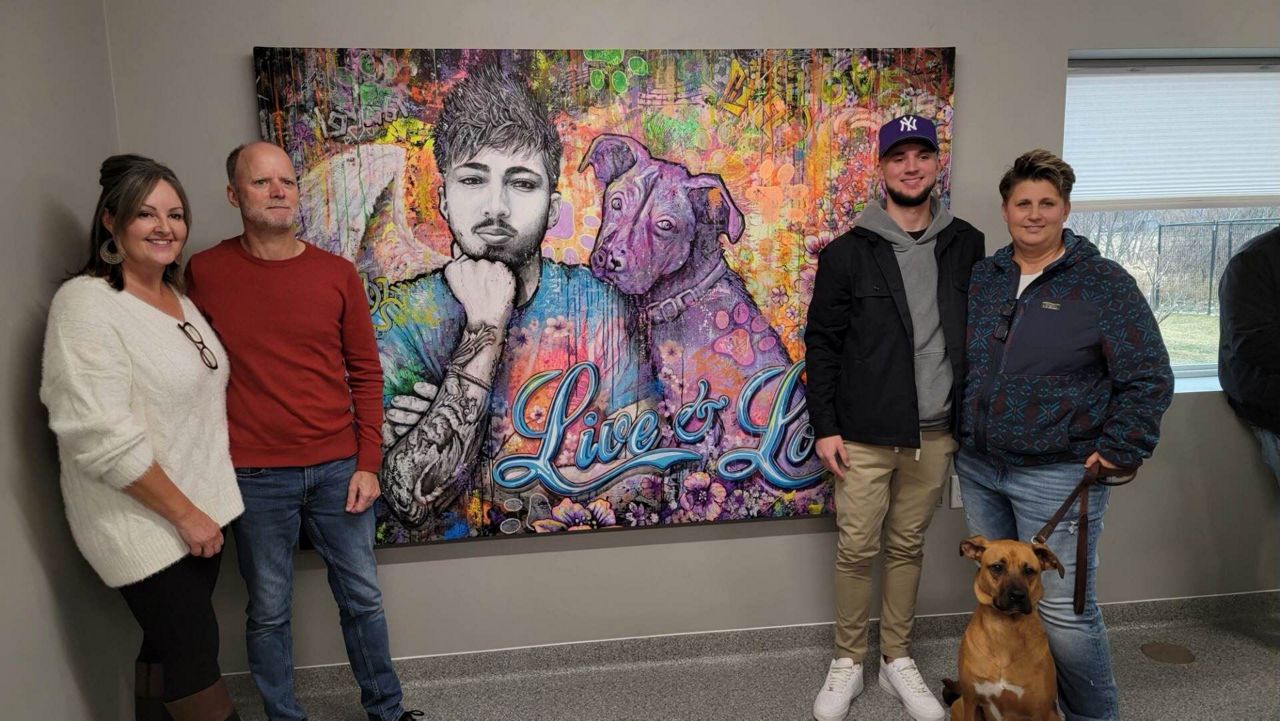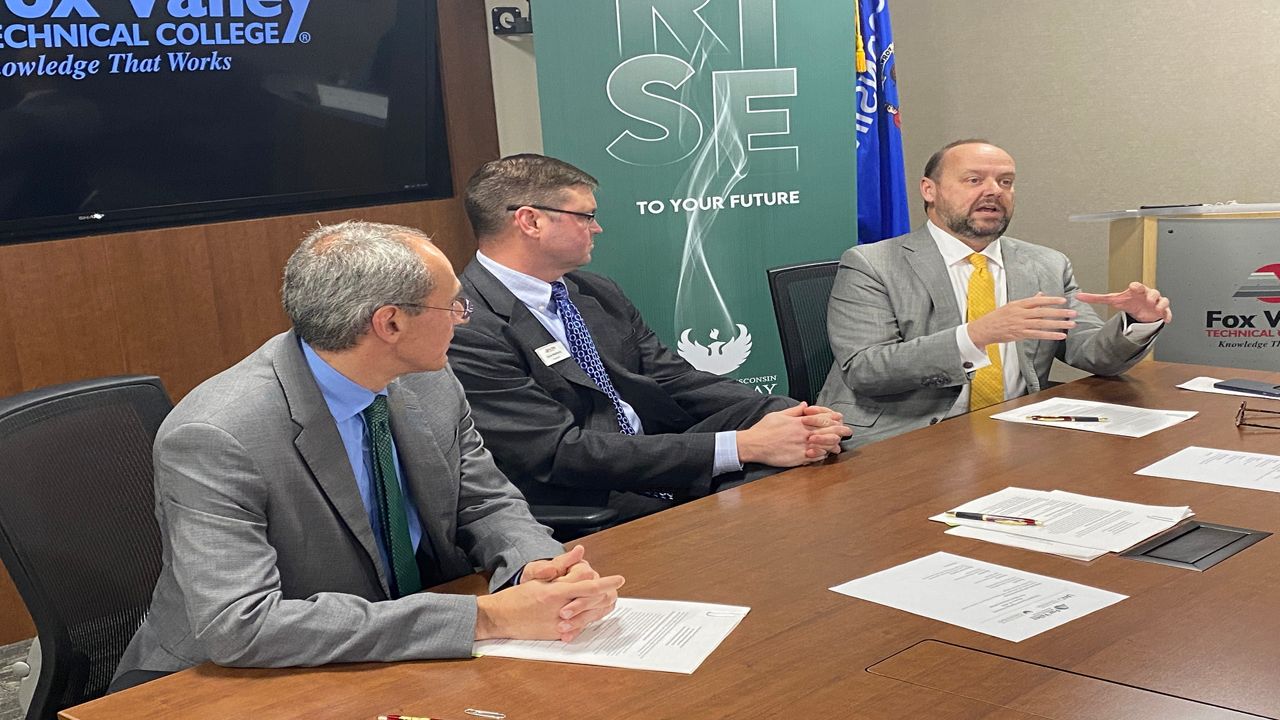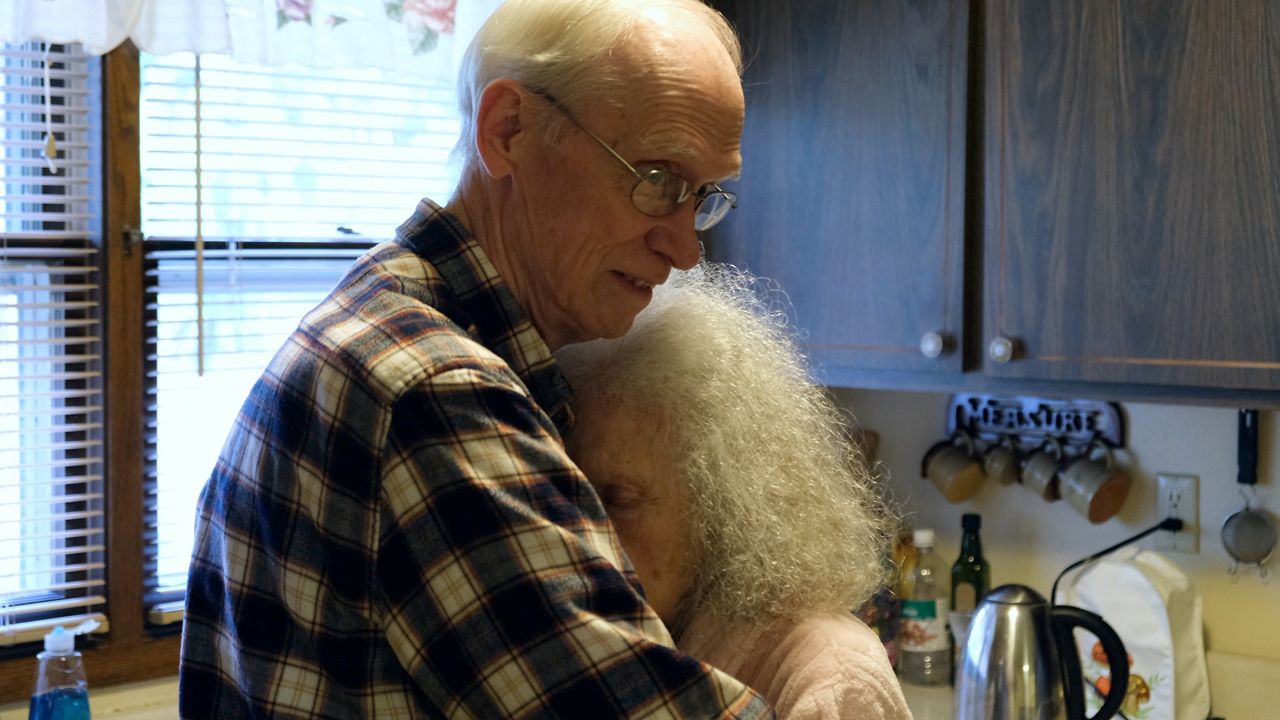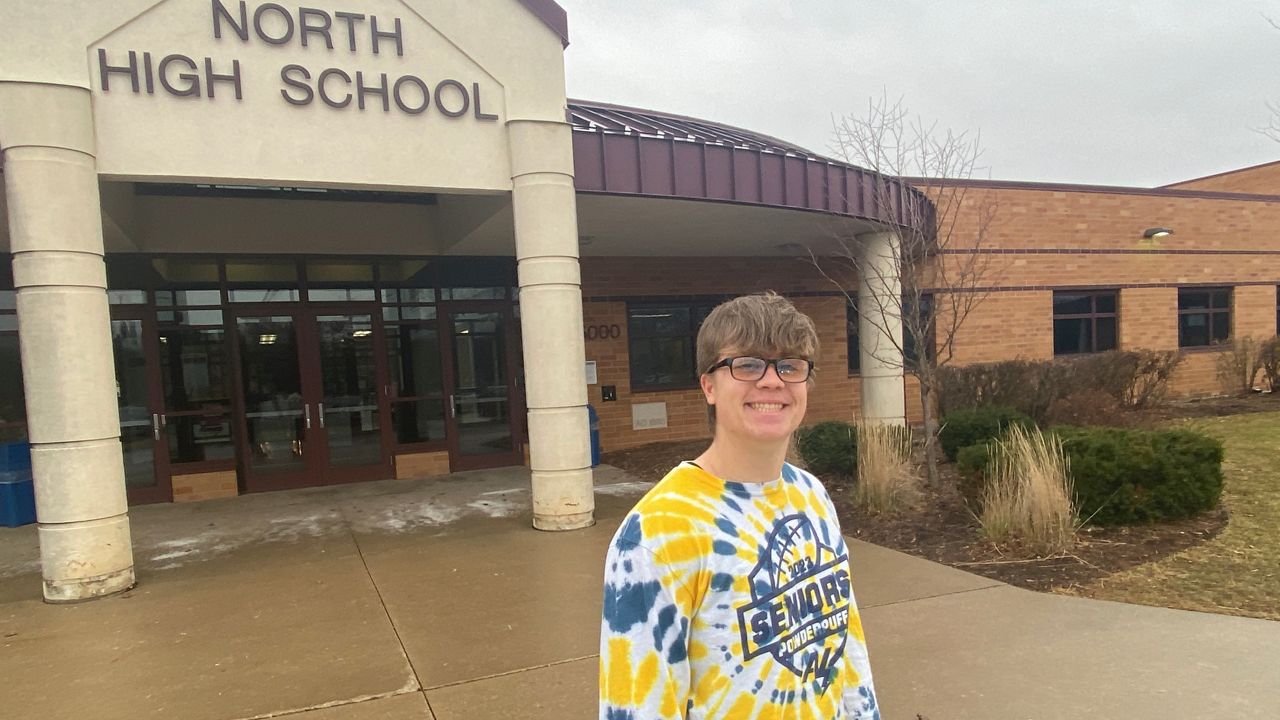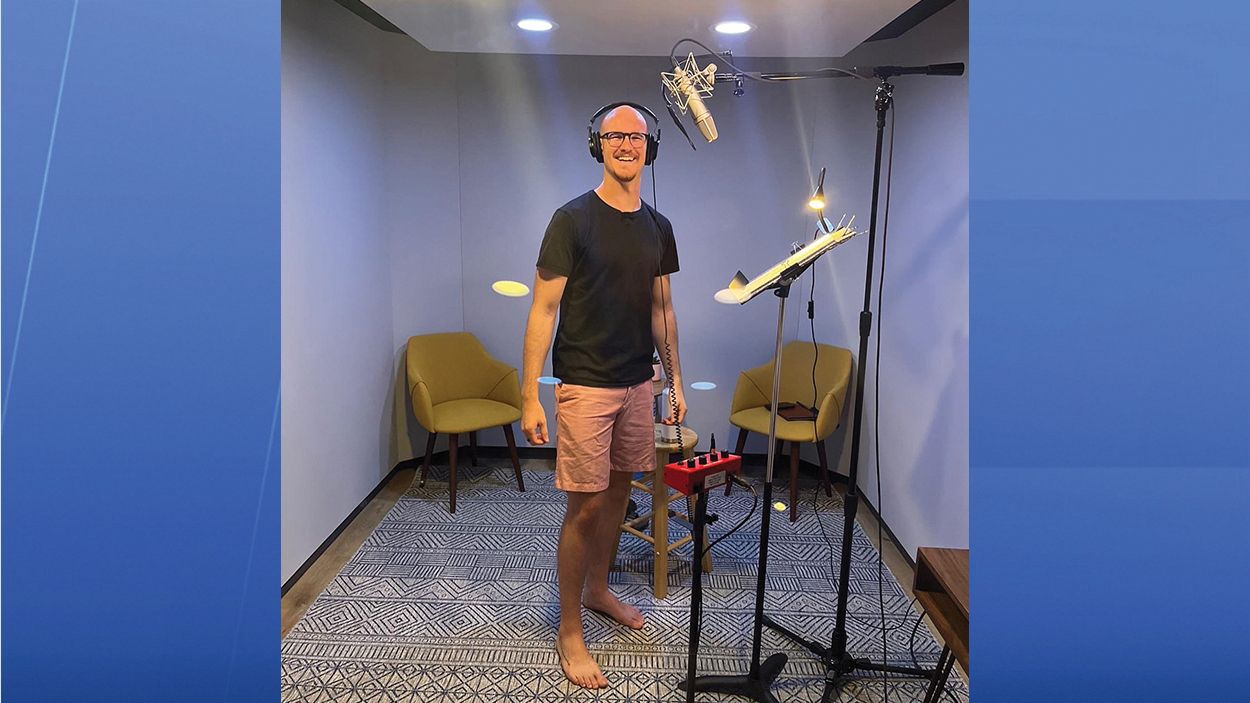APPLETON, Wis. — The phone rang and when Kari Mulder picked up, she heard the voice of her son Zack.
“‘Mom,’" Mulder recalled her son saying. “‘Tyler’s not breathing. I think he’s dead.’”
What You Need To Know
- Provisional data from the Wisconsin Department of Health Services shows the number of fentanyl overdose deaths grew by 97% between 2019 and 2021
- Learn more about the dangers of fentanyl here
- Learn more Saving Paws Animal Rescue, Inc. here
Kari Mulder ran out of the house and into her car, racing across town overwhelmed with an unimaginable fear.
She arrived at the dwelling where her son Zack and his twin brother, Tyler, lived to the sight of police and rescue vehicles. They stopped her from going inside.
“At that time, he had already passed,” she said. “There was nothing that they could have done to revive him.”
Tyler Anderson, 22, was another victim who died at the hands of fentanyl poisoning. It was Nov. 13, 2021.
Kari Mulder and Tyler’s father, Bruce Anderson, said they are not sharing these horrific details because they want to. They said they’re doing so because they know this could happen to you. And said they know if there’s one universal truth for parents everywhere, it’s that no father or mother wants to see their child die.

“I think that’s why we’re coming forward with this because I don’t think there are enough families out there that are talking about it,” said Mulder.
“They’re not talking about what’s happening to their children, because they’re afraid of public stigma. You know, ‘Well, why didn’t you do enough? Why didn’t you put him in counseling? Why didn’t you do an intensive, you know, therapy?’ Well, it’s just not that simple.
“As a parent, you can protect your child until they’re 18. You can do that. When they’re 22 years old, they’re an adult. And you can do as much as you can and put them in intensive care and therapy and whatever, but they have the option to take themselves out (of therapy) if they want. And there’s just not enough families out there that this has happened to that are talking about it. And it’s important that we have that open dialogue. We have another generation that’s coming forward, you know, that’s younger than 22 years old that they could be experiencing things that are much worse. But we have to educate and we have to continue to talk about it.”
****
Tyler Anderson wanted to serve his country. After graduating from Appleton North in 2017, he enlisted in the U.S. Marine Corps. But a couple of weeks before basic training was to begin, he was involved in a motorcycle accident.
A broken ankle had to be held together by pins as it healed. He was given opioids for the pain. As time went by, he developed a condition called complex regional pain syndrome.
“That is a nerve pain in which the opiates cannot even touch,” said Mulder. “But by then, he was already addicted. And in his mind, he felt taking opioids would help with that nerve pain.”
A nerve block curtailed his CRPS, but pins remained in his ankle and Tyler didn’t feel it could endure the rigors of basic training. He ended his commitment to the Marines.
“That mental anguish; I think that didn’t help with the opioid addiction,” Mulder said.
When the prescription opioids ended, Tyler turned to other avenues.
“And he had been doing that for a good four years,” Mulder said. “I tried. As a family, we tried and his brother tried to help him. And it wasn’t like something that he took every day. It was something that he would be good for a couple of months and then all of a sudden he wouldn’t. There would be something that would trigger it and he would start up again.”
Mulder said Tyler was in counseling. But this was during COVID, so it was done virtually.
“He knew he had a problem,” she said. “But you know, it just got ahold of him and unfortunately, this is the end result. And we’re here to speak on his behalf.”
****
Friends and family of the Anderson and Mulder families gathered Saturday at Saving Paws Animal Rescue.
It was there that Tyler found one of his best friends, a dog named Mya. It’s also a place that will now have a mural of Tyler, done by local artist Andrew Linskens, permanently hung in a room named in his honor.
Judging by the large number of people on hand, it was clear Tyler Anderson had made an impact in his short life. There were a lot of hugs and faces that flipped from smiles to frowns.
It was not an easy day.
“I hope it brings some education to parents,’’ said Bruce Anderson. “And even if they think it wouldn’t happen to them or somebody they know or their kids, it can.
“We just hope Tyler’s story lives on and we can help other families that something this tragic won’t happen to them.”
But the fentanyl epidemic is trending in the wrong direction. According to the Wisconsin Department of Health Services (DHS), provisional data shows the number of fentanyl overdose deaths in Wisconsin grew by 97% from 2019 (651) to 2021 (1,280).
Saturday, the Anderson-Mulder family talked about Tyler and his love for paintball, snowboarding and golf. Representatives from Unity Recovery Services spoke about the dangers of fentanyl and made available free fentanyl test strips and NARCAN. And his family talked about Tyler’s love for Mya and the importance of supporting Saving Paws and its animal rescue efforts.
Mulder said when people ask her about Tyler, it’s always done with the hope a greater good will be served.
“I’ve never skewed around the reason why he passed,” she said. “I’ve been point blank. ‘This is how he passed away. And I feel it’s important that you as a person know this because you will go back and you will tell others. And you will tell your kids and you will tell your grandchildren that you’ve met somebody that her son had passed away from fentanyl, not thinking that one pill he took was going to kill him.’”
She also has a message for the thousands of young adults who remain caught up in the world that cost her son his life.
“The younger kids have to talk about it,” she said. “They have to work with law enforcement because they know where this fentanyl is coming from.“The younger kids have to talk about it,” she said. “They have to work with law enforcement because they know where this fentanyl is coming from. They know who sells it. They know where it’s being dealt. And they need to be open with law enforcement in order to help them.”
And she understands this is a tough ask.
“It is a tough spot because they don’t want to feel unsafe by disclosing that information,” she said. “But more and more of these kids are going to be dying.
“They really need to think about that and take it seriously. That’s an age demographic that’s really hard because they don’t think that they can be touched. That they’re invincible. And they’re not. Your life can be wiped out in a second. And in this case, one pill will kill.”
Story idea? You can reach Mike Woods at 920-246-6321 or at: michael.t.woods1@charter.com





